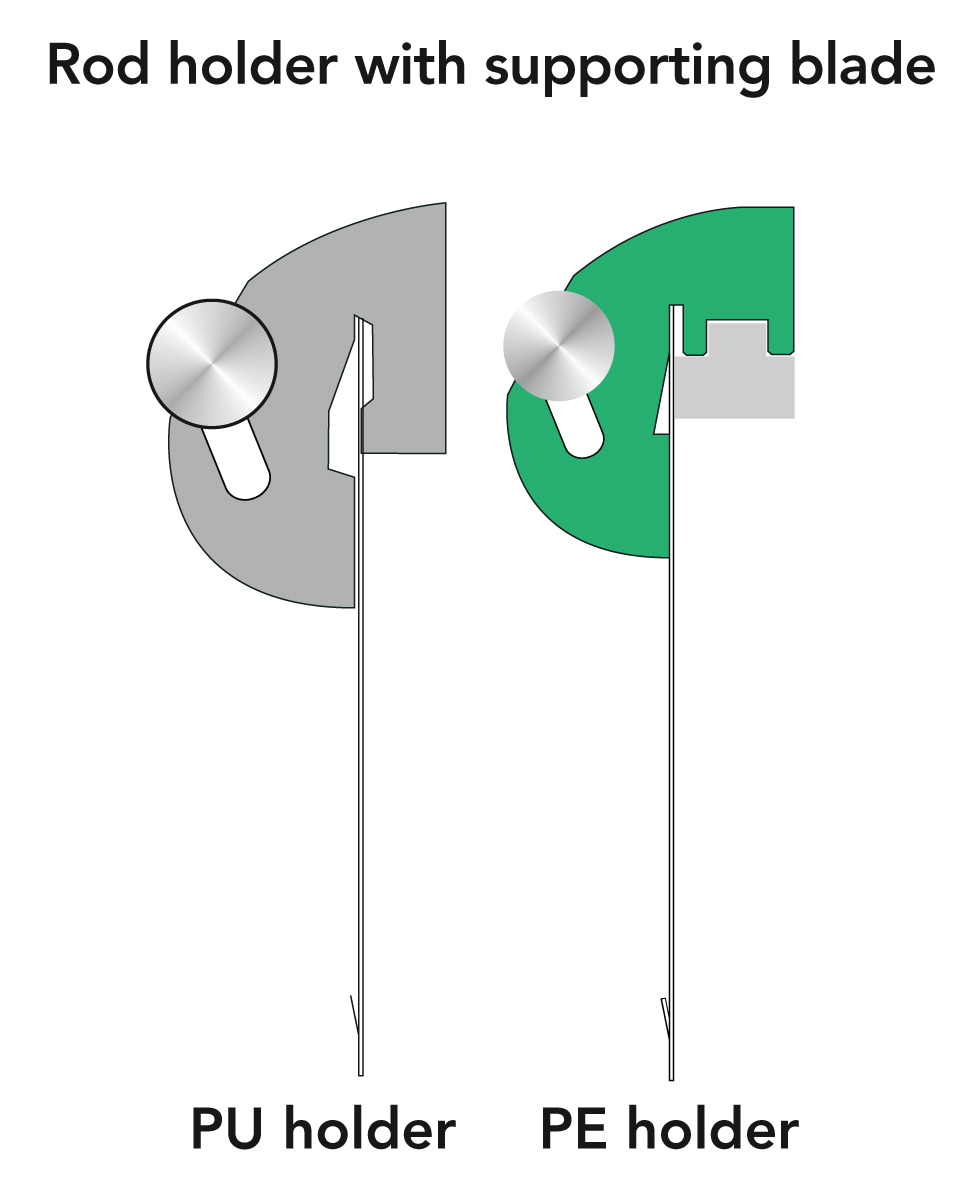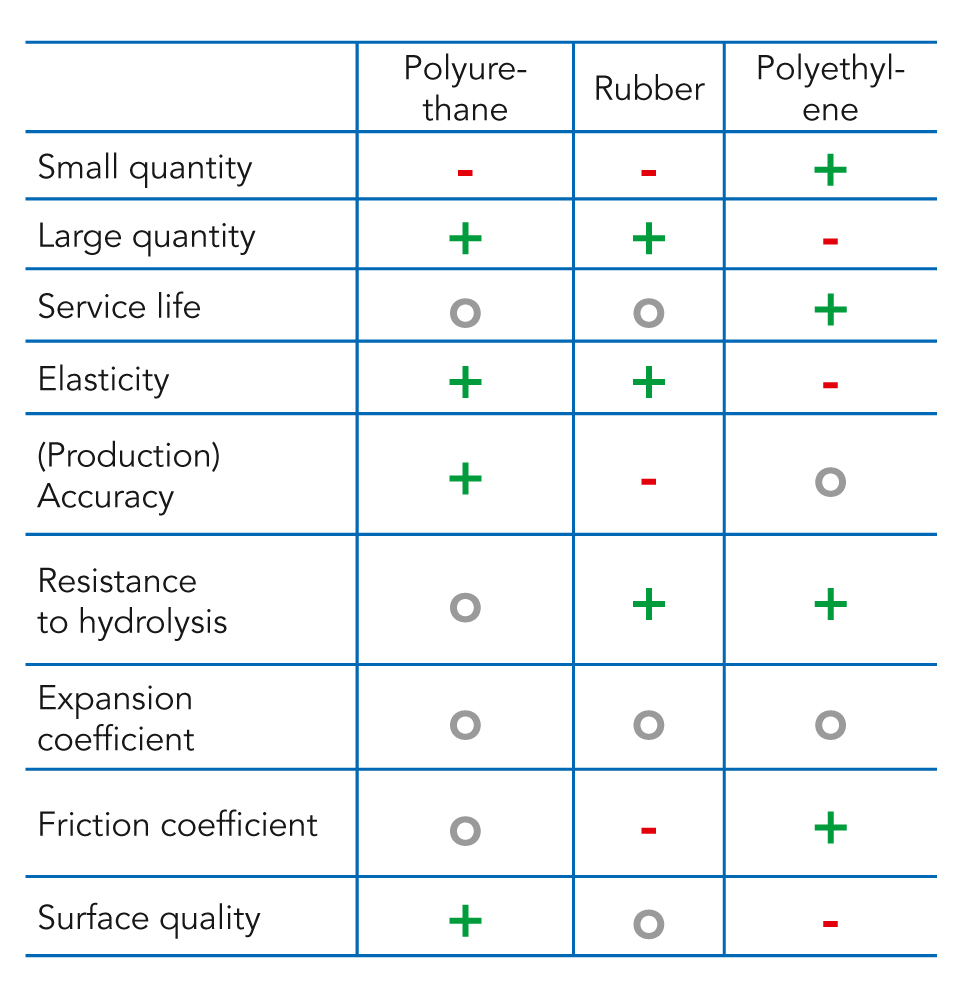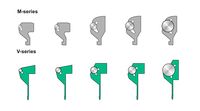
Optimal material selection
Concerning specification, the following three factors are decisive:
- Predefined construction principle
- Rod diameter
- Material
Since construction principle and rod diameter are predefined, the material is an important criterion for the properties of the rod holder.
Today, as a rule, Polyurethane (PU) or Polyethylene (PE) are applied; older systems frequently still have rod holders made of rubber.
Optimal material selection
Depending on material, different manufacturing processes are required: Rod holders made of PU and rubber are manufactured in molding or extrusion processes; rod holders made of PE are usually produced on milling and planing machines. The type of manufacturing as well as the specific material properties have advantages and disadvantages in terms of manufacturing costs and operating characteristics.
In general, PU material for rod holders features high elasticity which, same as friction coefficient and hardness, can be optimized at minimum costs. Additional advantages are high surface quality and good resistance to mineral oils, fats, benzine, ozone and UV radiation. PE features a very low friction coefficient, resistance to hydrolysis, flexible designs, and a longer service life of the rod holder.
Thus, finding the optimal material depends largely on the individual requirements. Recently, however, there is a trend towards
rod holders made of PE.


Optimal material selection
Concerning specification, the following three factors are decisive:
- Predefined construction principle
- Rod diameter
- Material
Since construction principle and rod diameter are predefined, the material is an important criterion for the properties of the rod holder.





